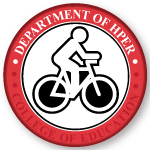Author ORCID Identifier
Document Type
Article
Publication Date
11-1-2014
Publication Title
American Journal of Physiology Heart and Circulatory Physiology
Volume
307
Issue
9
First Page
1288
Last Page
1297
Abstract
The purpose of this study was to determine if heat inhibits α2-adrenergic vasocontraction, similarly to α1-adrenergic contraction, in isolated human skeletal muscle feed arteries (SMFA) and elucidate the role of the temperature-sensitive vanilloid-type transient receptor potential (TRPV) ion channels in this response. Isolated SMFA from 37 subjects were studied using wire myography. α1 [Phenylephrine (PE)]- and α2 [dexmedetomidine (DEX)]-contractions were induced at 37 and 39°C with and without TRPV family and TRPV4-specific inhibition [ruthenium red (RR) and RN-1734, respectively]. Endothelial function [acetylcholine (ACh)] and smooth muscle function [sodium nitroprusside (SNP) and potassium chloride (KCl)] were also assessed under these conditions. Heat and TRPV inhibition was further examined in endothelium-denuded arteries. Contraction data are reported as a percentage of maximal contraction elicited by 100 mM KCl (LTmax). DEX elicited a small and variable contractile response, one-fifth the magnitude of PE, which was not as clearly attenuated when heated from 37 to 39°C (12 ± 4 to 6 ± 2% LTmax; P = 0.18) as were PE-induced contractions (59 ± 5 to 24 ± 4% LTmax; P < 0.05). Both forms of TRPV inhibition restored PE-induced contraction at 39°C (P < 0.05) implicating these channels, particularly the TRPV4 channels, in the heat-induced attenuation of α1-adrenergic vasocontraction. TRPV inhibition significantly blunted ACh relaxation while denudation prevented heat-induced sympatholysis without having an additive effect when combined with TRPV inhibition. In conclusion, physiological increases in temperature elicit a sympatholysis-like inhibition of α1-adrenergic vasocontraction in human SMFA that appears to be mediated by endothelial TRPV4 ion channels.
Recommended Citation
α1- and α2-Adrenergic responsiveness in human skeletal muscle feed arteries: the role of TRPV ion channels in heat-induced sympatholysis Jayson R. Gifford, Stephen J. Ives, Song-Young Park, Robert H. I. Andtbacka, John R. Hyngstrom, Michelle T. Mueller, Gerald S. Treiman, Christopher Ward, Joel D. Trinity, and Russell S. Richardson American Journal of Physiology-Heart and Circulatory Physiology 2014 307:9, H1288-H1297


Comments
This is the accepted manuscript of an article published in American Journal of Physiology-Heart and Circulatory Physiology and can be accessed at https://doi.org/10.1152/ajpheart.00068.2014